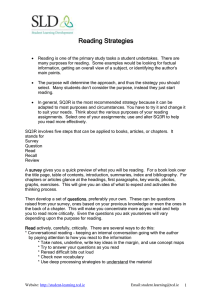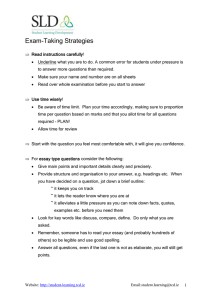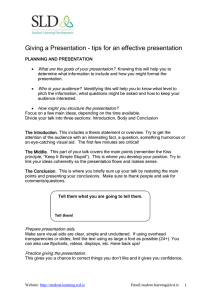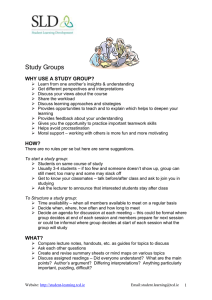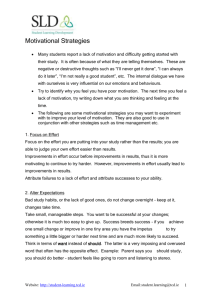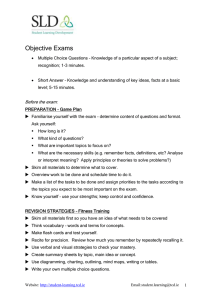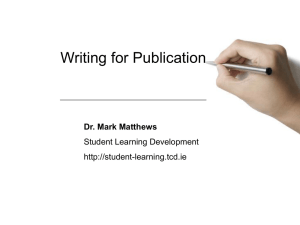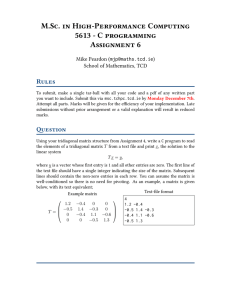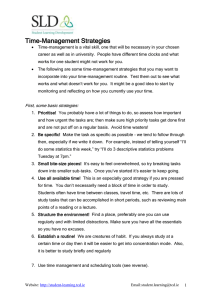Notemaking Strategies - ( MS Word 110 kB )
advertisement
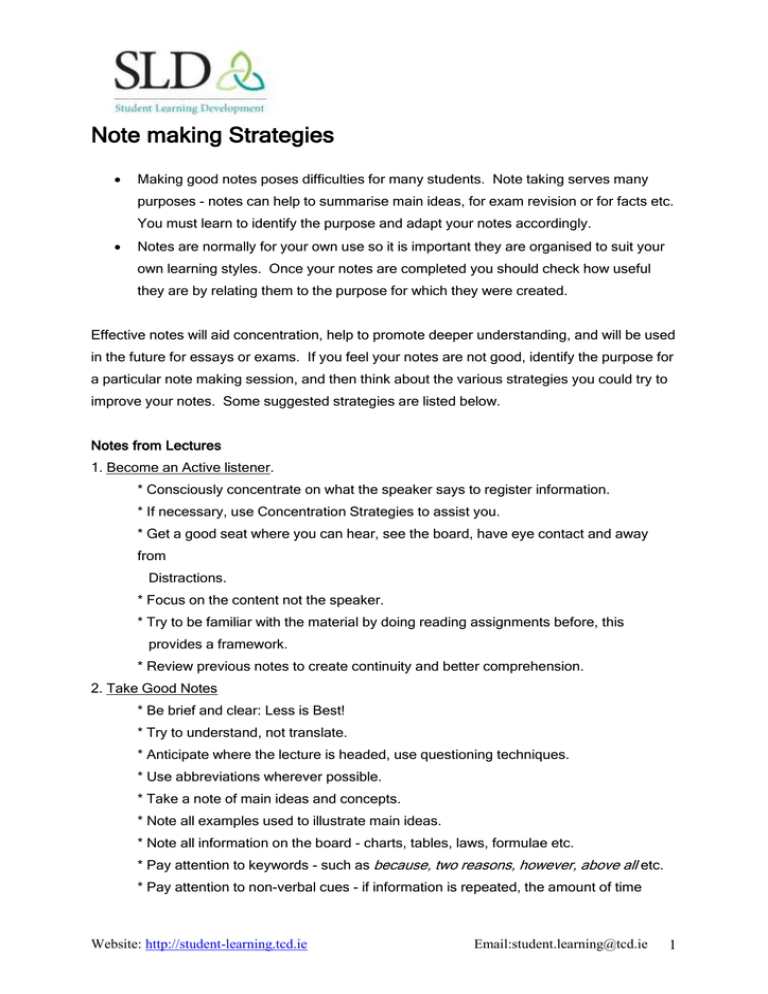
Note making Strategies Making good notes poses difficulties for many students. Note taking serves many purposes - notes can help to summarise main ideas, for exam revision or for facts etc. You must learn to identify the purpose and adapt your notes accordingly. Notes are normally for your own use so it is important they are organised to suit your own learning styles. Once your notes are completed you should check how useful they are by relating them to the purpose for which they were created. Effective notes will aid concentration, help to promote deeper understanding, and will be used in the future for essays or exams. If you feel your notes are not good, identify the purpose for a particular note making session, and then think about the various strategies you could try to improve your notes. Some suggested strategies are listed below. Notes from Lectures 1. Become an Active listener. * Consciously concentrate on what the speaker says to register information. * If necessary, use Concentration Strategies to assist you. * Get a good seat where you can hear, see the board, have eye contact and away from Distractions. * Focus on the content not the speaker. * Try to be familiar with the material by doing reading assignments before, this provides a framework. * Review previous notes to create continuity and better comprehension. 2. Take Good Notes * Be brief and clear: Less is Best! * Try to understand, not translate. * Anticipate where the lecture is headed, use questioning techniques. * Use abbreviations wherever possible. * Take a note of main ideas and concepts. * Note all examples used to illustrate main ideas. * Note all information on the board - charts, tables, laws, formulae etc. * Pay attention to keywords - such as because, two reasons, however, above all etc. * Pay attention to non-verbal cues - if information is repeated, the amount of time Website: http://student-learning.tcd.ie Email:student.learning@tcd.ie 1 spent on a topic, a change in lecturer’s tone. * Make sure your notes are easy to read; remember you may have to refer to them months later. 3. How To Take Notes - There are many different types of notes you can make; choose whichever suits your needs and is comfortable. Perhaps try out a different strategy and see what suits you best. Some examples: * Outline or skeleton - very effective, makes you create main points and relationships * Patterned - like a spider’s web; it is visual, good for showing relationships or for own ideas for assignments; also called “mind maps” * Straight prose - provides summary * One side - use the right side to take notes, use the left side later for recall questions, key words etc.; also known as the Cornell method. 4. Review your notes as soon as possible, this helps to consolidate and clarify. 5. Store your notes carefully. Ring binders are useful because you can add to them. Use some system for classification, whatever suits your needs but be consistent. 6. Monitor and Evaluate - are your notes working for you? Notes from Books 1. Decide the purpose in making the notes. 2. Try using SQ3R. * Survey and Question before you even start to take any notes * Read actively, making notes on relevant information such as major conclusions and supporting points. Make sure you understand what you read first, if not re-read before making any notes. It’s more effective if the notes are in your own words. * Recall. If you are unable to you may want to modify your notes 3. Notes should be brief and selective. 4. Use your own words, except where you feel a quotation is more apt then note the source. 5. Take note of the book’s title, author, publishing information and page numbers you were reading for further reference if you are reading in preparation for a paper or project. 6. Refer to Notes from lectures regarding types of notes etc. Website: http://student-learning.tcd.ie Email:student.learning@tcd.ie 2
